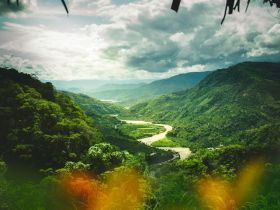OPINION: Carbon credits and indigenous peoples: what buyers should ask
By Carol Burga, Indigenous Engagement Expert, Emergent
As the Brazilian state of Pará launches widespread stakeholder consultations on its REDD+ program and Acre concludes consultations to update their benefit-sharing mechanisms, we are at a critical crossroads in the evolution of forest carbon markets in Brazil and beyond.
These two moments offer an opportunity to ensure Indigenous Peoples are not just beneficiaries but respected partners in REDD+ programmes.
Reducing Emissions from Deforestation and Forest Degradation (REDD+) has evolved from a conceptual tool into a global mechanism with real potential for forest protection and community development.
That potential is only fully realised when Indigenous Peoples are included, not as stakeholders to be informed, but as partners shaping decisions, structures, and benefits.
So often in the past, this has not been the case.
In Acre, the conclusion of consultations reflects lessons learned from over ten years of implementation.
The state has recognised the need to move from top-down frameworks and toward mechanisms that are truly co-designed with Indigenous and traditional communities.
Meanwhile, Pará is just beginning this process with one of the largest consultations of traditional peoples and communities ever seen in Brazil.
For corporate buyers of carbon credits, these developments are a timely reminder that ethical climate action means asking the right questions, not only about emissions avoided, but about rights, accountability, and long-term outcomes for forest communities.
Here are five questions buyers should be asking:
1. Are transparent benefits sharing mechanisms in place?
Before purchasing credits, review the benefit-sharing plan.
Is it publicly available? Does it clearly lay out how revenues will reach Indigenous and local communities? Were these mechanisms co-developed with those communities?
If these elements are missing or unclear, that's a red flag.
Jurisdiction crediting programmes such as ART TREES require evidence of inclusive, participatory benefit-sharing processes.
Without this, credits cannot be issued or sold.
In Acre, recent consultations focused precisely on improving transparency and inclusivity.
Transparency is not only a best practice; it's increasingly becoming a market expectation.
2. Have process been followed to ensure Free, Prior and Informed Consent (FPIC)?
FPIC is not a box to check — it's a process that must be upheld throughout the programme lifecycle.
Every REDD+ initiative involving Indigenous territories must include robust FPIC procedures, aligned with international standards like those set by the UN Declaration on the Rights of Indigenous Peoples (UNDRIP).
Communities must have the opportunity to accept or reject the programme freely, based on full information presented in culturally appropriate formats and languages.
In Pará, the consultation process offers an opportunity to build this from the ground up.
Corporate actors can engage with local civil society groups to understand how FPIC is being implemented.
3. Are existing Indigenous governance structures supported?
Too often, new climate finance mechanisms create parallel structures rather than investing in those already led by Indigenous Peoples.
REDD+ programmes should strengthen existing Indigenous institutions, channelling funds through them and ensuring they are meaningfully represented in governance bodies.
In Acre, Indigenous organisations have called for more direct roles in fund management and decision making.
Buyers who support their inclusion contribute to long-term institutional capacity and local ownership.
4. What are the benefits beyond carbon?
A carbon credit that avoids deforestation but undermines local rights is not a high integrity credit.
The highest-integrity REDD+ programmes support food sovereignty, cultural preservation, biodiversity and territorial security alongside climate goals.
Look for programmes that monitor, report, and value these non-carbon benefits.
If a programme boasts low-cost credits but has no measurable benefits for Indigenous communities, it should be avoided.
5. Are there pathways for ongoing engagement with Indigenous and traditional communities?
REDD+ is not a one-time investment, it's a relationship.
Programmes must continue to evolve, adapt, and respond to local needs and feedback.
Acre's revised benefit-sharing plan is a reminder that even well-established programmes need to grow over time.
Companies should engage directly with Indigenous representatives and local NGOs to understand how their contributions are perceived and be open to adjusting procurement practices based on community input and emerging best practices.
As consultations open in Pará and close in Acre, the carbon market stands at a juncture.
REDD+, and particularly jurisdictional programmes, have the potential to be a real tool for climate justice, fully involving rather than marginalising those who have protected forests for generations.
Corporate buyers have immense power to shape this outcome by purchasing credits from programmes that insist on respect, transparency, and inclusion, ensuring that carbon finance uplifts Indigenous Peoples and reinforces their central role in preserving the Amazon and precious rainforests across the world.






